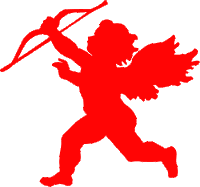 |
| Getting ideas for my future classroom |
While exploring the museum I noticed some things that could be incorporated into my classroom:
-Having a hands-on area (Barbie exhibit – dress up, design clothing)
-An art area with supplies (Barbie – create outfits on paper and then use fabric)
-Small circle rugs; get enough for all students and that could be their “spot” when sitting on the floor (Dora exhibit – used for decoration)
-Cultural art and displays; also use languages, smells, etc. (Dora)
-Parade (Dora, had kids follow the main guy and sang and danced)
-Giant map of the World (Egypt exhibit)
-Have an open space to put post-it notes with responses, questions, and ideas
Some new things that I learned while exploring the museum were:
-Ahlan Wa Sahlan = Welcome in Arabic
-$10 USD = 57 Egyptian pounds
-Most Egyptians are Muslim, Coptic Christian, Protestant, Baha’is and Jewish
-Egypt sphinxes stood for strength and power, could also portray a god
-Qahwah = coffeehouse
-Ma’as salaama = goodbye
-Welcome a new baby with a parade and loud noises
 |
| Our class with "Anne Frank" |
 |
| Ruby Bridges' classroom |
-Drops of water on a Penny: Have students take a guess of how many drops of water will fit on a penny. Have them use pipettes to drop water on a penny and see if their guess was close. Do one more time to compare results. Why would the results be different?
-Sweethearts and H2O: Use big and small sweethearts and have students drop water on each to see which message will disappear first. Why does this happen?
-Coke v. Diet Coke v. Minute Maid Lemonade: Have students read the ingredients on a can of coke, diet coke and minute maid lemonade. Then, place each can in a pitcher of water and see which ones float or sink. Have students figure out why and teach about density.
-Ivory v. Dial Soap: See which soaps float and teach about density
-Layered Liquids: Use dish soap, Kayro Syrup, Alcohol, water with food coloring, and oil and put in a clear cup or container. See what each ingredient does within their layer. Why do certain ingredients do certain things?








